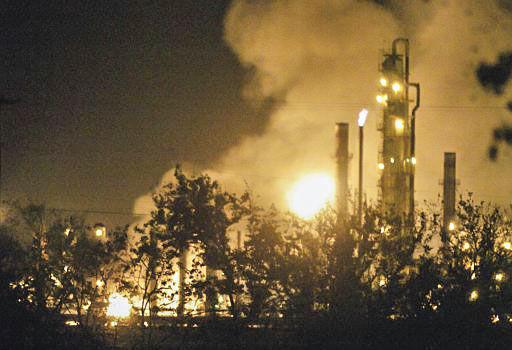Ten years ago Monday, a hydrocarbon vapor cloud explosion tore through the Texas City oil refinery, killing 15 workers and injuring more than 100 others. Today, those affected have played a role in changing the way safety is viewed in the petroleum industry, an industry brimming with Aggies.
Texas A&M Regent Anthony Buzbee represented 165 clients who were injured in the explosion in cases against British Petroleum, the company that owned the refinery at the time.
“I think the industry learned a lot from the explosion,” Buzbee said. “I know from my involvement in other refinery accidents that the BP 2005 explosion has been studied by its competitors and those in the industry in an effort to learn from the disaster.”
Buzbee said he has seen change in the industry over the last decade, but said he still has doubts as to whether BP itself learned a lesson. He said BP admitted fault right away, but continued to challenge the severity of the workers’ injuries.
He said the explosion can be used as a lesson for all.
“The problem in the oil and gas field is that there will always be top-side pressure for production,” Buzbee said. “It takes a well-trained work force, with discipline, to resist that management pressure. When management puts production above safety, people die.”
Eric Newell, Class of 2000, works for Brent Coon and Associates, a firm that represented about 400 people, including the well-known victim Eva Rowe, who lost both her parents in the explosion. Newell said at the heart of the explosion was BP’s initiative to cut costs by 25 percent.
“There were any number of relatively cheap things they could have done to prevent the explosion,” Newell said.
A culture existed at BP, Newell said, that disregarded workers and their safety in favor of profit. To address this, Newell said there are documents from the time of investigation that other companies can use to show their employees what they can do to prevent explosions occurring in the future.
Other efforts have been made to improve safety. Newell said part of the settlement in the Rowe case required BP to donate $32 million to university programs and hospitals, including the Mary Kay O’Connor Process Safety Center at Texas A&M.
Sam Mannan, director of the O’Connor Process Safety Center, said one objective of the center is to make safety second nature in process industries. The center was established in 1995 in response to a 1989 chemical plant explosion in Houston, killing Mary Kay O’Connor along with 22 other workers.
“The center’s mission is to lead the integration of process safety through education, research and service into the education and practice of all individuals and organizations involved in chemical operations,” Mannan said. “The vision of the center is to serve as the premier process safety resource for all stakeholders so that safety becomes second nature for managers, engineers and workers.”
Mannan said lessons from the explosion permeated various areas including design issues, technical safety issues, management system flaws and safety culture.
“A major finding was how risk should be managed with regard to placement of occupied buildings within plant boundaries,” Mannan said. “Yet another finding was related to the differences between personal safety and process safety and the need to have separate and specific performance indicators for each.”
Looking forward, Mannan said he does not think there is a quantifiable way to look at changes made.
“There is presently no reliable means for evaluating the performance of industry in limiting the number and severity of accidental chemical releases,” Mannan said. “There is also limited data with which to prioritize efforts to reduce the risks associated with such releases.”
Newell said he would want people to look at the events surrounding the explosion and remember that it was preventable.
“There was absolutely no reason for it to have occurred,” Newell said. “I wasn’t an engineering student when I was at A&M, but I became fairly knowledgeable about things like process safety, which is something that A&M has one of the foremost centers in the country.”
Newell said engineering students going into the industry, especially in management, need to be aware that it is their job to make safety a priority and try to not focus only on profit.
“If you focus too much on the short term to make some money, people can get hurt,” Newell said.
At an academic level, Mannan said universities like A&M can respond by adjusting and changing curriculum.
“Academic and research organizations as well have a societal responsibility to respond to incidents such as Texas City in studying these incidents in order to determine what changes may be needed in the curriculum to better prepare our graduates,” Mannan said.
10 years later, Texas City explosion serves as benchmark
March 22, 2015

Photo by Provided
The oil refinery explosion in Texas City on March 23, 2005 killed 15 workers and injured hundreds.
Donate to The Battalion
Your donation will support the student journalists of Texas A&M University - College Station. Your contribution will allow us to purchase equipment and cover our annual website hosting costs.



















